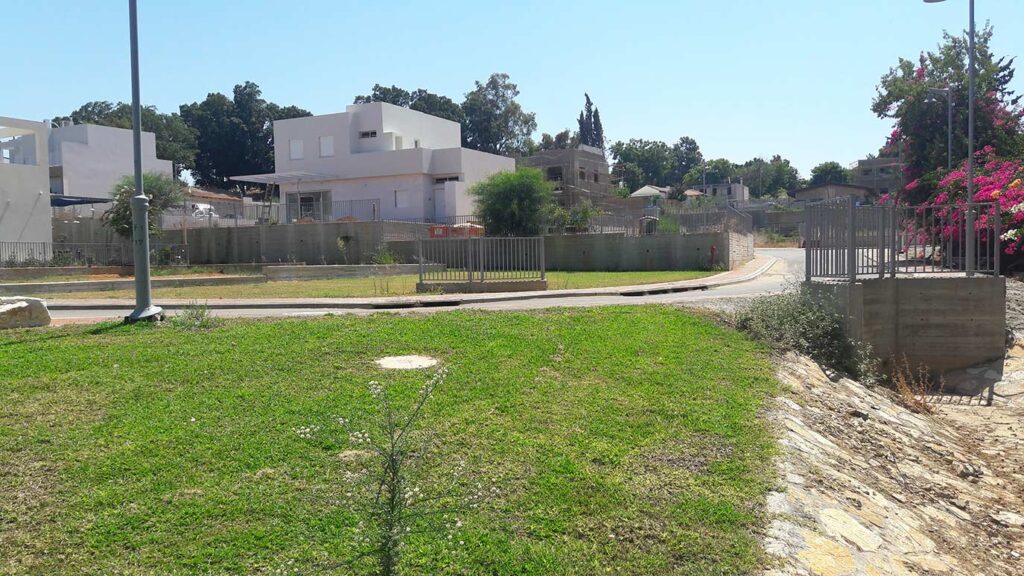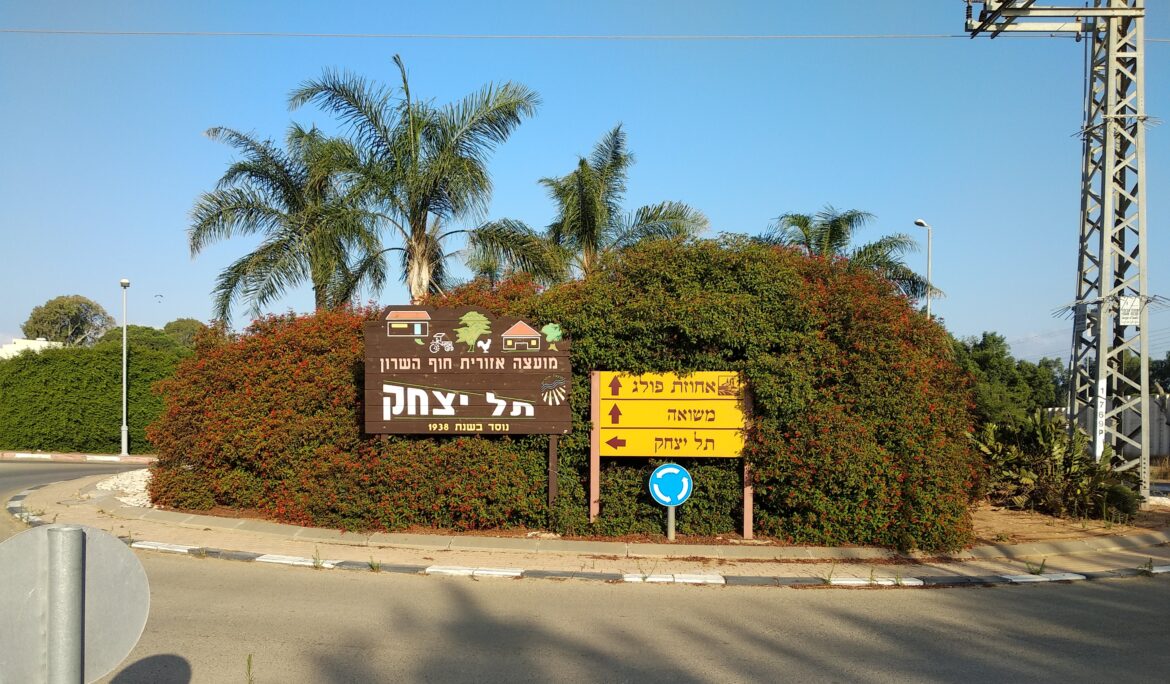Nestled in Israel’s fertile Sharon Plain, midway between Tel Aviv and Haifa, lies Tel Yitzhak, a small but historically significant moshav (cooperative agricultural community). Often overlooked by travelers in favor of Israel’s more prominent cities, Tel Yitzhak offers a glimpse into the country’s rich agricultural heritage, community-driven lifestyle, and cultural history. From its lush landscapes to its pivotal role in regional development, Tel Yitzhak embodies the spirit of Israel’s pioneering communities while providing a peaceful and scenic destination for visitors seeking to explore off-the-beaten-path locations.
Whether you are interested in history, agriculture, or rural tourism, Tel Yitzhak presents an opportunity to experience the charm of Israel’s heartland, where traditions and modern life coexist harmoniously. Its serene environment, green fields, and historical landmarks make it a destination well worth discovering.

Historical Background
Tel Yitzhak was established in 1938 by Jewish immigrants, primarily from Europe, who were part of the tower and stockade settlement movement. This movement, which emerged during the British Mandate of Palestine, aimed to create fortified agricultural communities to secure land and provide a safe home for Jewish settlers amidst the growing tensions of the pre-state period.
Named in honor of Yitzhak Steiger, a notable figure in the Zionist movement, Tel Yitzhak reflects the resilience, determination, and pioneering spirit of its founders. These early settlers faced numerous challenges, from cultivating arid and challenging land to establishing a functioning community from scratch. Over the decades, Tel Yitzhak developed into a vibrant moshav that balanced agricultural innovation with a strong sense of communal life.
The Agricultural Heritage
Agriculture has been the backbone of Tel Yitzhak since its founding. The moshav was established on land rich in fertile soil, part of the Sharon Plain, which is known for its productivity and favorable climate. Early settlers cultivated citrus orchards, vegetables, and other crops, transforming the region into a productive agricultural hub.
Today, agriculture continues to play a significant role in Tel Yitzhak’s identity. Visitors can explore lush orchards, green fields, and flowering groves, experiencing firsthand the region’s agricultural richness. Seasonal harvests, particularly of citrus fruits, offer opportunities for farm tours, fruit picking, and understanding traditional and modern farming techniques.
The moshav also demonstrates the evolution of agricultural innovation in Israel, with some farms incorporating modern irrigation systems, greenhouse cultivation, and sustainable practices. For visitors interested in agritourism, Tel Yitzhak offers an educational and immersive experience, showcasing the connection between land, community, and food production.
Cultural and Community Life
Tel Yitzhak is more than an agricultural settlement; it is a living community with strong social cohesion and cultural traditions. The moshav structure fosters a sense of collaboration and mutual support, with residents participating in community events, festivals, and educational programs.
Local festivals and events often celebrate agricultural milestones, such as the citrus harvest, and include activities like food tastings, workshops, and traditional music performances. These events provide visitors with a unique opportunity to experience Israeli rural culture, interact with local residents, and gain insight into the daily rhythms of moshav life.
The community also emphasizes education and heritage preservation, with initiatives aimed at documenting the moshav’s history, showcasing early settlement challenges, and maintaining cultural landmarks. This dedication to cultural continuity ensures that Tel Yitzhak retains its historical significance while adapting to modern needs.
Nature and Surrounding Landscapes
One of the highlights of visiting Tel Yitzhak is its scenic environment. The moshav is surrounded by rolling fields, orchards, and Mediterranean landscapes, providing a tranquil escape from urban life. The nearby coastal plains offer opportunities for walking, cycling, and birdwatching, with seasonal migrations bringing diverse species to the area.
The proximity of Tel Yitzhak to Israel’s central coast allows visitors to combine rural exploration with trips to nearby beaches, nature reserves, and parks. The combination of fertile agricultural land, open skies, and natural greenery creates a sense of peace and connection to the land that is often missing in urban centers.
Historical Landmarks and Points of Interest
Though small, Tel Yitzhak is located near several historical and cultural landmarks that enhance its appeal as a tourist destination:
- Nearby Archaeological Sites: The Sharon Plain has been inhabited for millennia, and visitors can explore ancient ruins, burial sites, and artifacts that provide insights into the region’s historical continuity.
- Historical Moshav Structures: Original houses, communal buildings, and agricultural installations from the early settlement period remain preserved, allowing visitors to visualize life in the 1930s and 1940s.
- Educational Trails: Some walking paths in and around Tel Yitzhak include signage and information about the moshav’s history, agricultural development, and natural environment, offering an engaging learning experience for visitors of all ages.
These sites make Tel Yitzhak not just a place to enjoy nature but also a location to connect with Israel’s modern historical narrative.
Tourism and Activities
While Tel Yitzhak is primarily a residential and agricultural community, it welcomes visitors seeking rural tourism and outdoor activities. Popular experiences include:
- Farm Tours: Explore orchards, vegetable fields, and greenhouses, learning about modern and traditional farming techniques.
- Fruit Picking: Seasonal fruit picking, particularly citrus, allows visitors to engage directly with local agriculture.
- Cycling and Hiking: Trails in and around the moshav provide scenic routes for cycling and walking, with opportunities to enjoy the Mediterranean flora and fauna.
- Birdwatching: The Sharon Plain attracts a variety of migratory and resident birds, making Tel Yitzhak an appealing spot for bird enthusiasts.
Visitors can also use Tel Yitzhak as a base for exploring central Israel, with easy access to Tel Aviv, Netanya, and Caesarea. This combination of rural charm and accessibility makes it an ideal destination for both day trips and longer stays.
Community Initiatives and Sustainability
Tel Yitzhak exemplifies the integration of community life with sustainable practices. Many local farms use modern irrigation and eco-friendly cultivation methods, reflecting Israel’s broader focus on water conservation and sustainable agriculture. Community initiatives often involve educational programs for both residents and visitors, emphasizing the importance of environmental stewardship and cultural preservation.
These efforts ensure that Tel Yitzhak remains a vibrant and resilient community while offering visitors a responsible and enriching tourism experience.
Practical Tips for Visiting Tel Yitzhak
To make the most of a visit:
- Timing: Spring and autumn are ideal due to mild temperatures and seasonal agricultural activity.
- Transportation: Tel Yitzhak is accessible by car or public transport from nearby cities like Netanya and Tel Aviv.
- Footwear: Comfortable walking shoes are recommended for farm tours and nature walks.
- Guided Tours: Consider joining a local guide for an in-depth understanding of the moshav’s history, agriculture, and ecology.
- Photography: The combination of orchards, fields, and historic buildings provides excellent photo opportunities.
Why Tel Yitzhak Matters
Tel Yitzhak may be small, but it represents a microcosm of Israel’s pioneering spirit. Its combination of historical significance, agricultural heritage, natural beauty, and community life offers visitors a unique perspective on the development of rural Israel. It is a place where history, nature, and culture converge, providing a quiet yet profound experience of the country’s landscape and heritage.
For travelers seeking to go beyond Israel’s urban centers and explore the heartland of the Sharon Plain, Tel Yitzhak offers an unforgettable glimpse into life in a historic moshav, where the land continues to sustain and inspire its residents and visitors alike.
Conclusion
Tel Yitzhak is a hidden gem in Israel’s coastal heartland, a community that combines agricultural innovation, historical significance, and natural beauty. From its fertile orchards and lush landscapes to its preserved historical structures and community spirit, the moshav provides a unique experience for travelers seeking both relaxation and cultural insight. Its proximity to central Israel allows visitors to enjoy the tranquility of rural life while easily accessing major cities, beaches, and other attractions.
Whether exploring the fields, hiking nearby trails, observing wildlife, or learning about the pioneering settlers who founded the moshav, a visit to Tel Yitzhak offers a rich and immersive experience. It is a destination that highlights the resilience of human communities, the beauty of cultivated landscapes, and the enduring connection between people and the land.
For anyone interested in rural tourism, history, or ecological exploration, Tel Yitzhak is a destination that deserves a place on your itinerary. It is a peaceful oasis in the Sharon Plain, where nature, history, and community converge to create a truly memorable experience.

